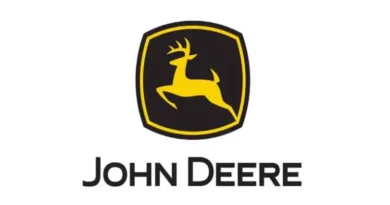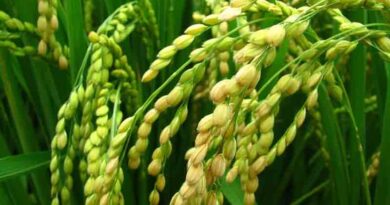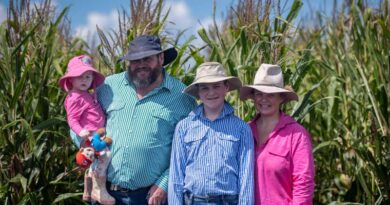Expanding from dairy to beef on limited land
13 September 2022, UK: With expansion of their dairy herd not feasible, converting to beef by making maximum use of homegrown energy feeds to allow increased stocking rates has been a logical step for one Welsh farm.
The last 20 years have seen some big changes at Dinarth Hall Farm, Rhos-on-Sea near Llandudno on the North Wales coast.
Originally settled by the family four generations ago in 1937, by the start of this millennium the business was milking 60 dairy cows run alongside a flock of sheep.
But low milk prices were making the dairy enterprise unsustainable. With a campsite also on the farm constraining further expansion of the dairy herd, and no other additional land available locally, a crunch decision was made to come out of dairy and go into beef.
It is a transition that, in part, has been possible thanks to making maximum use of homegrown energy-rich barley and forage maize to facilitate more intensive stocking for the beef enterprise. Today, the business, which is farmed by fourth generation Shaun Parry with his brother Nick and their father John, is home to 300-plus beef cattle, including calves and stores.
Despite some challenges with converting to beef, it is a system that fits well with the farm’s limited size of 93 ha (230 acres).
“We buy in dairy x beef cross Aberdeen Angus and Belgian Blue male and female calves at 1-2 weeks old and sell them as store cattle at about 20 months,” explains Shaun.
“The calves receive starter pellets until they are weaned off milk at about 8 or 9 weeks old, followed by half cake and half rolled barley for 3-4 weeks, before going onto straight rolled barley after that.
“The transition to beef was difficult. Initially we had a few sucklers but they needed a lot of land. After that we bought weaned calves. But since we also have a silage contracting side of the business, we knew quite a lot of local farmers so started buying younger calves from our customers.”
Over the years, the beef enterprise has grown progressively. As it became more established, the family went out of sheep 10 years ago.
Nowadays, all calves are purchased from an autumn-calving dairy farm. Rearing begins in September, with the housed calves weaned onto ad lib rolled barley plus barley straw over winter. Later on, silage is also introduced into the ration, ahead of turnout in April. When they come back in during September, they receive a simple, low cost TMR of 25% wholecrop barley with 75% grass silage to keep bought-in feeds to a minimum. Around 60 ha (150 acres) of grass are cut for silage – normally in May and July.
As an alternative to wholecrop, maize is sometimes grown if this fits into the rotation after an old ley has been destroyed, although the benefit of barley is its flexibility to harvest some as wholecrop and the remainder as a mature crop for the rolled grain and for the farm’s supply of straw.
Shaun says: “We used to feed rolled wheat, which we grew for two years, but had problems with acidosis and had to bring the calves onto it slowly, so we switched to barley about five years ago. We still can’t put them straight onto barley because they gorge and bloat, but we have less acidosis with the barley,” he adds.
Initially growing spring barley to replace the wheat, this yielded only 5.0 t/ha (2 t/acre) so the decision was made two years ago to grow winter barley. But rather than a conventional winter variety, the family opted for a high output hybrid barley. It is a decision that has worked well.
Shaun’s brother Nick explains: “We wanted to try the hybrid because we want to save on buying in feed. There are a lot of mouths to feed, so we wanted the maximum tonnes per hectare for the amount of stock. We also want the volume of straw for bedding and to ad lib feed.”
Because the site where the hybrid barley is grown is north-facing and on heavy land that is prone to waterlogging, it is not well-suited to maize. But despite the hybrid barley being drilled late in its first year, on 20 October, it still produced a good crop, says Nick, although this year’s crop, drilled on 25 September, performed even better.
Harvested as grain the hybrid barley yielded 8.8 t/ha (3.5 t/acre) this summer. Harvested as wholecrop, the brothers estimate it yields a fresh weight of 30-40 t/ha (12-16 t/acre).
Shaun says: “Last year, half the hybrid barley grown was harvested as wholecrop and half as grain. This year, because of the increasing number of calves we have, we ensiled just 30% and combine harvested the rest.
“We have a corn cracker on the forager and ensile with an additive for better keeping. The wholecrop feeds very well. They prefer it to the maize. They root through the silage for it.”
To ease spending on bought-in fertiliser, manure is ploughed in during September before planting hybrid barley. Two or three applications of nitrogen are then made in spring, and both Shaun and his brother Nick have noticed its vigorous growth. “Its growth really jumps with that first nitrogen application,” says Nick. “It’s a hardy crop. Very forgiving. Even through the pre-emergence herbicide ran out early when it was applied, there weren’t many weeds in the untreated area.”
Looking ahead, Shaun believes the farm has now reached a point where it is achieving the maximum possible from the area available, so the only way forward will be to take on more land.
Shaun says: “I would love to expand. We produce a lot from what we have. But land is difficult to come by locally. I would double the amount of hybrid barley if I had more acres.”
Also Read: Tractor sale in India lowest in two months; 32 percent down in August 2022
(For Latest Agriculture News & Updates, follow Krishak Jagat on Google News)















